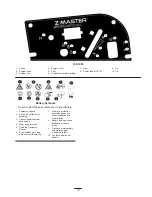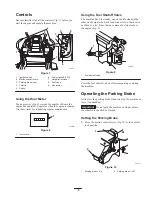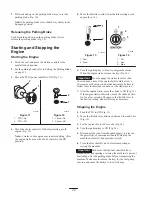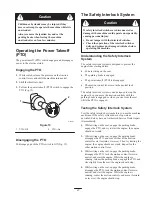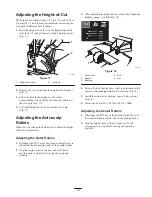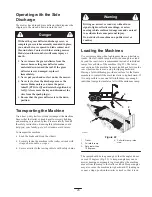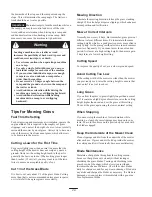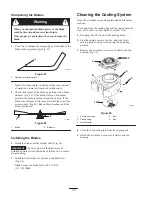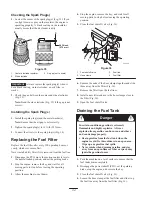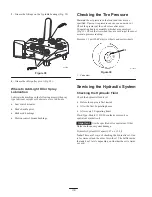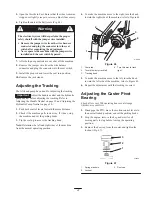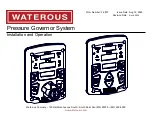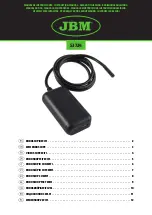
29
Checking for Bent Blades
1. Rotate the blades until the ends face forward and
backward (Fig. 24). Measure from a level surface to the
cutting edge of the blades (Fig. 25). Note this
dimension.
m–1078
Front
Figure 24
MEASURE FROM
CUTTING EDGE TO A
LEVEL SURFACE
m–2539
Figure 25
2. Rotate the opposite ends of the blades forward.
3. Measure from a level surface to the cutting edge of the
blades at the same position as in step 1 above.
Note: The difference between the dimensions obtained
in steps 1 and 3 must not exceed 1/8 inch (3 mm). If this
dimension exceeds 1/8 inch (3 mm), the blade is bent
and must be replaced; refer to Removing the Blades and
Installing the Blades on page 30.
A blade that is bent or damaged could break apart
and could seriously injure or kill you or
bystanders.
•
Always replace a bent or damaged blade with a
new blade.
•
Never file or create sharp notches in the edges
or surfaces of a blade.
Warning
Removing the Blades
Replace any blade if it hits a solid object, is out of balance,
or is bent. To ensure optimum performance and continued
safety conformance of the machine, use genuine Toro
replacement blades. Using replacement blades made by
other manufacturers may cause the machine to be out of
conformance with safety standards.
Hold the blade end using a rag or thickly padded glove.
Remove the blade bolt, spring disk, and blade from the
spindle shaft (Fig. 26).
Contact with a sharp blade can cause serious
injury.
Wear gloves or wrap the sharp edges of the blade
with a rag.
Warning
1
3
2
4
m-4226
3
4
5
Figure 26
1.
Sail area of blade
2.
Blade
3.
Spring disk
4.
Blade bolt
5.
Cone toward bolt head

